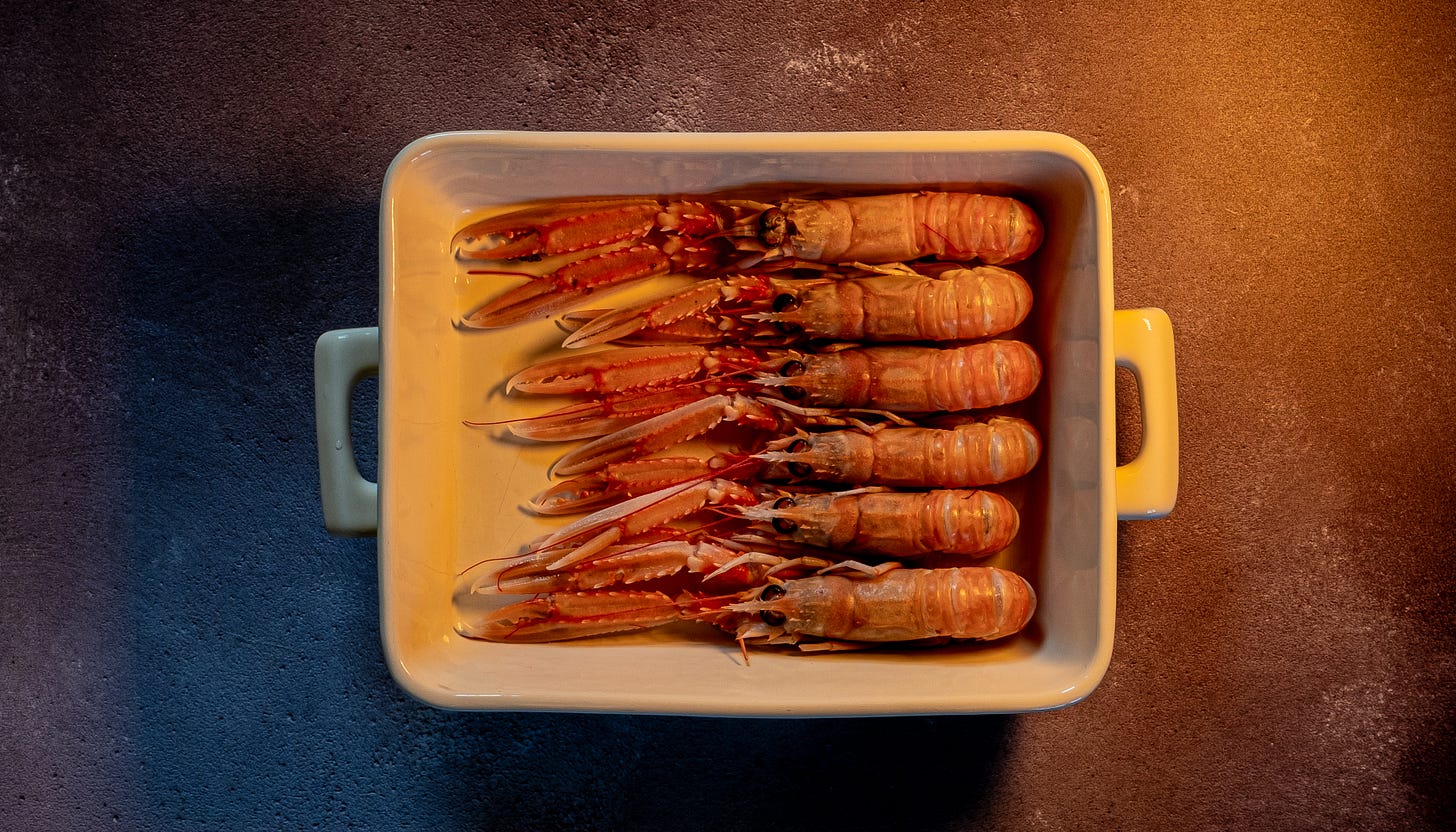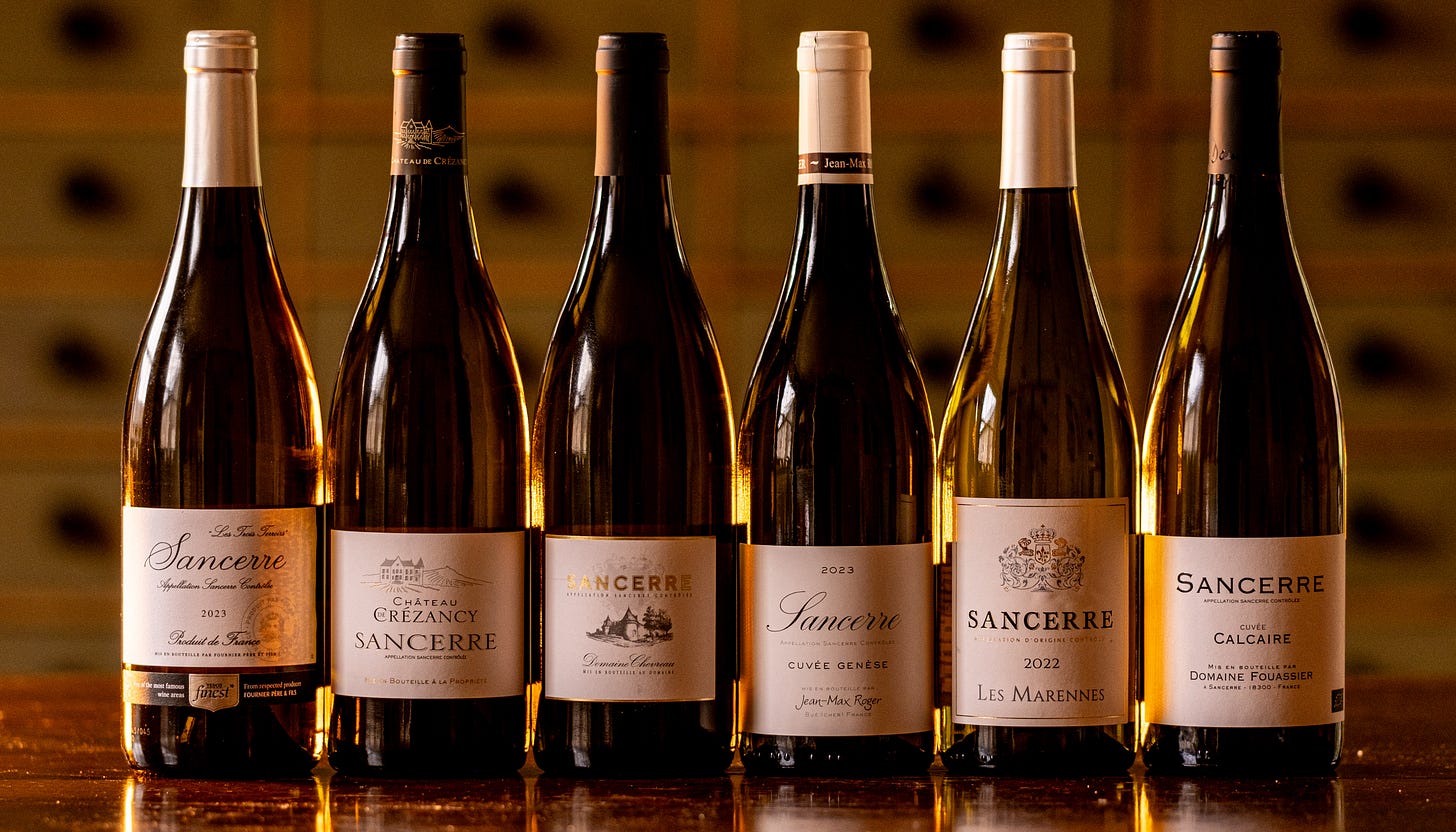Langoustine & Sancerre
..... an appropriate marriage .....
As the Langoustine season starts to close, it seemed appropriate to flag these delicious shellfish, prized for their delicate, sweet flavour and tender, succulent meat, with a wine option. The difficulty of harvesting them add to their exclusivity, making them a luxury ingredient in high-end cuisine.
The langoustine season in the UK typically runs from April to October. During these months, the waters are warm enough to support active harvesting, and the langoustines are at their peak in terms of size and quality.
Scotland is considered the best place to harvest langoustine in the UK. The cold, clean waters around Scotland, particularly in areas like the West Coast, the North Sea, and the Hebrides, provide ideal conditions for langoustine to thrive.
The other area known for high quality langoustine is Northern France, particularly Brittany. The region's cold, nutrient-rich waters provide an excellent environment for langoustine, making it a key area for their capture.
They are tricky to harvest. They live at depths of 200 to 500 meters on the seabed, often burrowing in mud or sandy sediments, which makes them challenging to locate and capture. Langoustines are not farmed due to the complexities of their biology and habitat requirements, and require specialised trawling methods.
To sit alongside these crustaceans you need a wine with bright acidity and minerality to complement the texture and richness of this catch. Crisp, vibrant, and refreshing are probably the most distinguishable features of most Sancerres, hence making it the perfect match for Langoustine.
However, it should not be restricted to only one type of shellfish, as a excellent Sancerre will accompany most fish with aplomb.
The region sits at the mid-point of the Loire river. The Loire is France’s longest river with the source being about 60 kilometres east of Valence, in the Massif Central, on the south side of the old, volcanic mountain, Mont Gerbier de Jonc. There are three springs on this mountain that are the source of the Loire.
The vineyards around Sancerre were originally planted with only the Pinot Noir, but after the phylloxera problems of the late 1800s, the Sauvignon Blanc was planted. Initially, the new white wines were sold in Paris, and then their popularity saw distribution encompass the world.
Looking for a wine around the £20 mark, and with easy availability from the main retailers, a collection was pulled together from Tesco, Waitrose, Ocado, and Majestic.
There was one clear winner:
Domaine Jean-Max Roger ‘Cuvée Genese’ Sancerre 2023
With 35 hectares of vines, this family run business, is located in the village of Bué, a seven minute drive, south-west, from the town of Sancerre. The family history dates back to 17th century for making wine here, with Jean-Max establishing this domaine in the early 70s, and his two sons now operating the business.
Cuvée Genese is a plot of limestone-based land that has been owned by the family for many generations, and creates this elegant, classical Sancerre. Very pale colour, with a light gooseberry nose and a crisp, lemon grass, stony, fresh, slightly herbaceous palate. This flawless example would happily sit alongside any collection of crustaceans.
£19.99 - Majestic - price ‘mix six’




